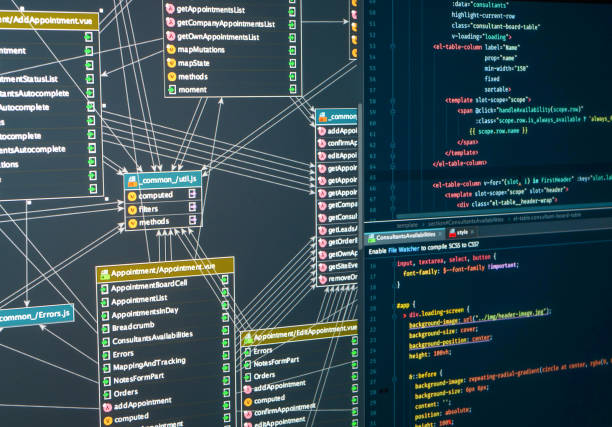
In recent years, the demand for software applications has skyrocketed, driven by the rapid pace of digital transformation. However, traditional software development often struggles to keep up with this demand due to its time-intensive and resource-heavy nature.
Enter low-code and no-code platforms – a groundbreaking solution that is reshaping the way businesses and individuals create software applications. These platforms are not just a trend; they are a paradigm shift in the world of technology.
What Are Low-Code and No-Code Platforms?
Low-code and no-code platforms are software development environments that allow users to build applications with minimal or no programming skills. They provide intuitive drag-and-drop interfaces, pre-built templates, and customizable workflows that simplify the development process.
- Low-Code Platforms: Designed for developers and tech-savvy users, low-code platforms reduce the complexity of coding by automating repetitive tasks and providing reusable components. They still require some level of coding knowledge but significantly accelerate development timelines.
- No-Code Platforms: Aimed at non-technical users, no-code platforms eliminate the need for coding entirely. These platforms empower business professionals, entrepreneurs, and even hobbyists to create functional applications without relying on IT teams.
The Factors Driving the Rise of Low-Code and No-Code Platforms
Several factors have contributed to the growing popularity of these platforms:
1. Increasing Demand for Software
Businesses of all sizes require custom software to stay competitive. From automating internal processes to creating customer-facing applications, the need for tailored solutions has never been higher.
2. Shortage of Skilled Developers
The global shortage of experienced developers has made it challenging for companies to hire the talent they need. Low-code and no-code platforms bridge this gap by enabling non-developers to create applications.
3. Cost Efficiency
Traditional software development can be expensive, especially for startups and small businesses. Low-code and no-code platforms significantly reduce costs by minimizing the need for extensive coding and development teams.
4. Faster Time-to-Market
In today’s fast-paced digital economy, speed is crucial. These platforms allow businesses to develop, test, and deploy applications in days or weeks, rather than months.
5. Empowerment of Citizen Developers
The rise of citizen developers – non-technical users who create applications to solve specific business problems – has fueled the adoption of no-code platforms. This democratization of software development empowers employees across various departments to contribute to digital transformation efforts.
Popular Use Cases for Low-Code and No-Code Platforms
1. Business Process Automation
Companies use these platforms to streamline workflows, automate repetitive tasks, and improve operational efficiency. Examples include invoice processing, employee onboarding, and inventory management.
2. Customer Relationship Management (CRM)
Businesses can create custom CRM tools to manage customer interactions, track sales pipelines, and analyze data without investing in expensive software.
3. E-Commerce and Websites
Entrepreneurs and small business owners leverage no-code platforms to build online stores, personal websites, and landing pages without hiring developers.
4. Mobile Applications
From fitness apps to event management tools, low-code platforms enable rapid development of mobile applications for Android and iOS.
5. Data Analysis and Dashboards
These platforms allow users to visualize data, create dashboards, and generate reports, helping organizations make data-driven decisions.
The Benefits of Adopting Low-Code and No-Code Platforms
1. Accessibility
These platforms make software development accessible to everyone, regardless of their technical expertise.
2. Scalability
Many low-code and no-code platforms are designed to grow with your business, offering scalability and integration with other tools and systems.
3. Customization
Users can tailor applications to meet their specific needs without being restricted by off-the-shelf software.
4. Reduced Dependency on IT
By empowering non-technical users to build applications, organizations can reduce their reliance on IT teams and free up resources for other strategic initiatives.
5. Enhanced Collaboration
These platforms foster collaboration between IT and business teams, ensuring that applications align with business objectives.
Challenges and Limitations
While low-code and no-code platforms offer numerous advantages, they are not without their challenges:
- Limited Customization: Complex applications with highly specific requirements may exceed the capabilities of these platforms.
- Vendor Lock-In: Businesses may become dependent on a specific platform, making it difficult to switch providers or migrate data.
- Security Concerns: Applications built on no-code platforms may lack robust security features, making them vulnerable to cyber threats.
- Learning Curve: Although designed to be user-friendly, some platforms still require users to invest time in learning their functionalities.
The Future of Low-Code and No-Code Platforms
The adoption of low-code and no-code platforms is expected to grow exponentially in the coming years. According to Gartner, 70% of new applications developed by 2025 will be created using low-code or no-code technologies. This trend will continue to drive innovation, enabling organizations to adapt quickly to changing market demands.
Moreover, advancements in artificial intelligence and machine learning will further enhance these platforms, making them even more powerful and intuitive. As the ecosystem matures, we can expect to see increased integration with emerging technologies such as IoT, blockchain, and augmented reality.
Conclusion: A Game-Changer for Businesses and Individuals
Low-code and no-code platforms are revolutionizing software development by making it faster, more affordable, and accessible to a broader audience. Whether you’re a seasoned developer or a novice, these platforms provide the tools you need to bring your ideas to life. They empower businesses to innovate, reduce costs, and improve efficiency in a competitive landscape.
As we embrace this new era of software development, the possibilities are endless. Stay tuned for our next article, where we’ll explore how artificial intelligence is shaping the future of low-code and no-code platforms. Don’t miss it – the future of technology is just getting started!

